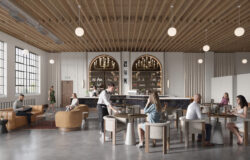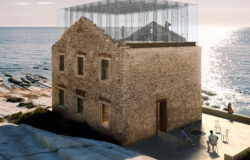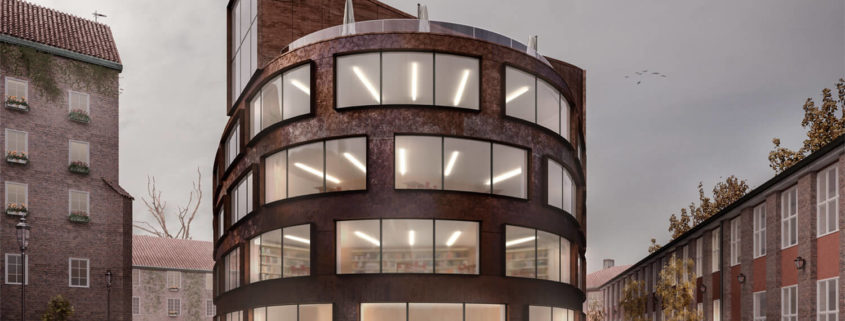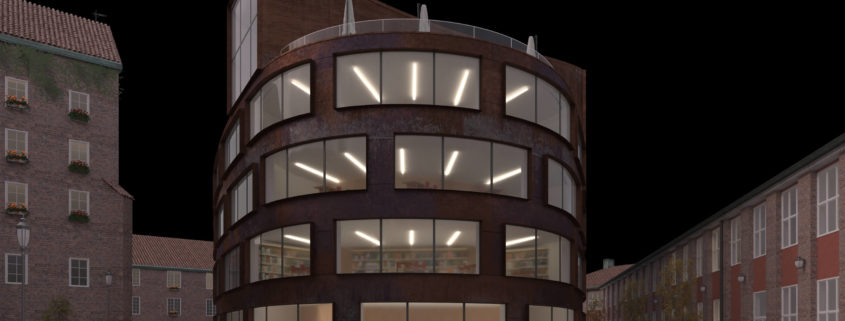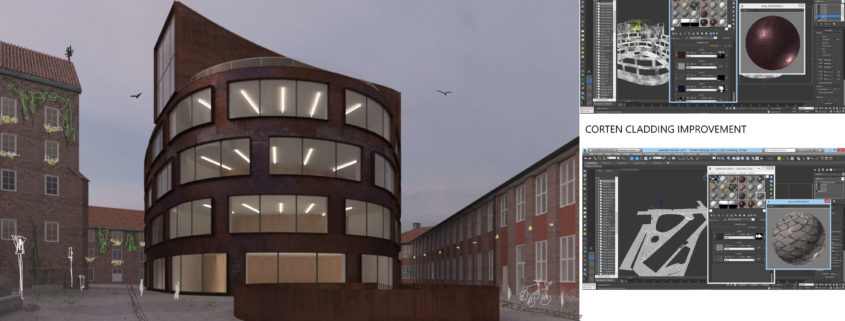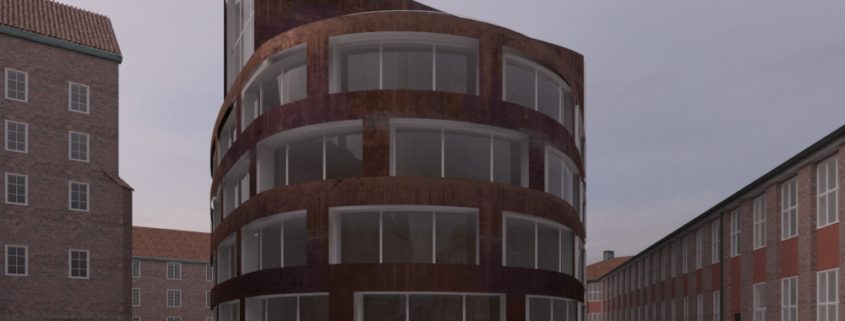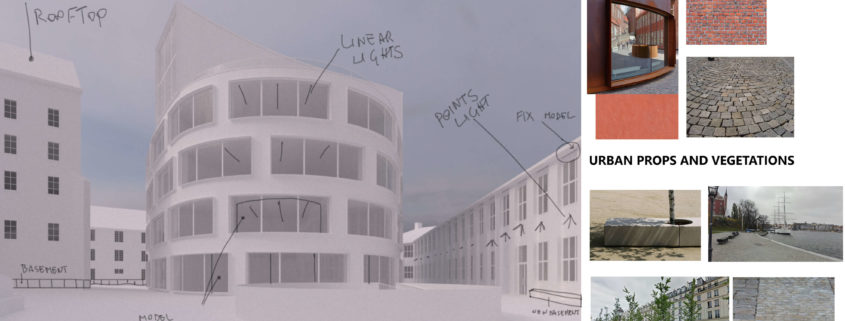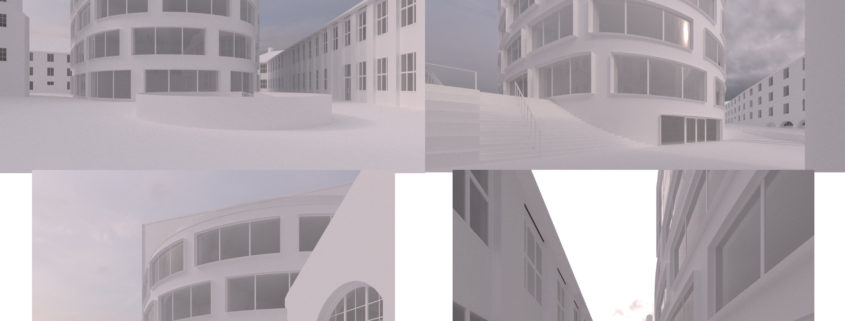Tomorrow Challenge 2018 entry by User-21188106
When I saw the project for the first time, I thought it would be interesting to enhance the plasticism and the building material.
Having respect for the place where it fits, I tried not to denaturalize it, so I maintained a philological approach and I left the original materials to be as natural as possible.
My initial thought was to visualize the scene during a day with a slightly cloudy sun and whitish hues.
Given this, I started looking for good references that would allow me to build the concept through mood and color palette.
But being at the beginning of the creative process, I wanted to try other forms of lighting to see what kind of sensations aroused in me.
In the end, however, I returned to my initial idea because the type of light I wanted to get me would have allowed me to enhance the red color of the materials present.
The lack of sunlight, the harsh climatic conditions are characteristic elements of northern Europe. I tried to imitate these elements in a simple way.





